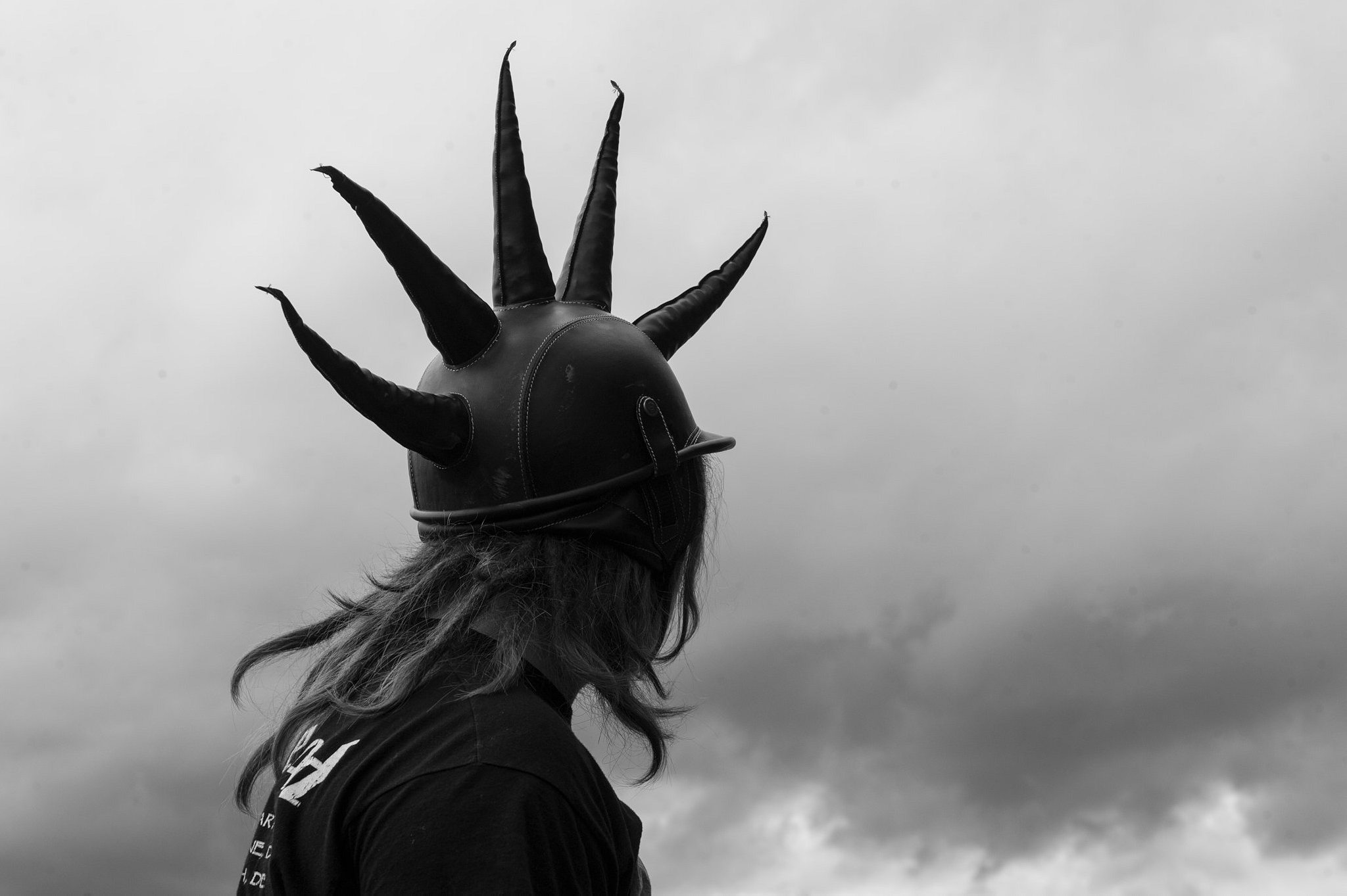A music photographer turns his lens to what was behind him the whole time: the crowd.
Music photographer Nic Bezzina had shot concerts for years before turning his lens to what was behind him the whole time: “people who are sort of losing their minds”. The crowd, that amorphous, vibrating creature with a thousand faces, is the subject of his upcoming book, for which he just launched (appropriately enough) a crowd-funding campaign. Titled “Release The Crowd,” the project took Bezzina to the heavy metal festivals of Europe and Australia, revealing both the intensity that comes with letting go, as well as the close communities inside which fans can truly be themselves. He joined R&K from his home in Sydney.
Roads & Kingdoms: How did this project come about?
Nic Bezzina: I fell into photography because I started photographing music. From bands in small clubs, I began to get published and went up to shooting festivals. And after a while of being herded around with another 40-50 photographers, noticing that we all have the same gear and that we’re all shooting the same thing, I started turning my back on the bands.

R&K: When did you first start photographing the crowds at festivals?
Bezzina: The first year I photographed the crowds, I did it by approaching people and asking permission. The photos all looked snapshoty and a little bit naff so I figured out through trial and error that the best shots were the ones that were uncompromised and really fly-on-the-wall. Those really captured a piece of life. At that point, I started to focus on getting these shots and being part of the crowd. I walked unnoticed and got right into the mosh pits. In certain situations, other photographers would just wait, too afraid to venture, whether it was raining really heavily or there was a huge mud puddle. But I saw those as opportunities to get real life photographs.
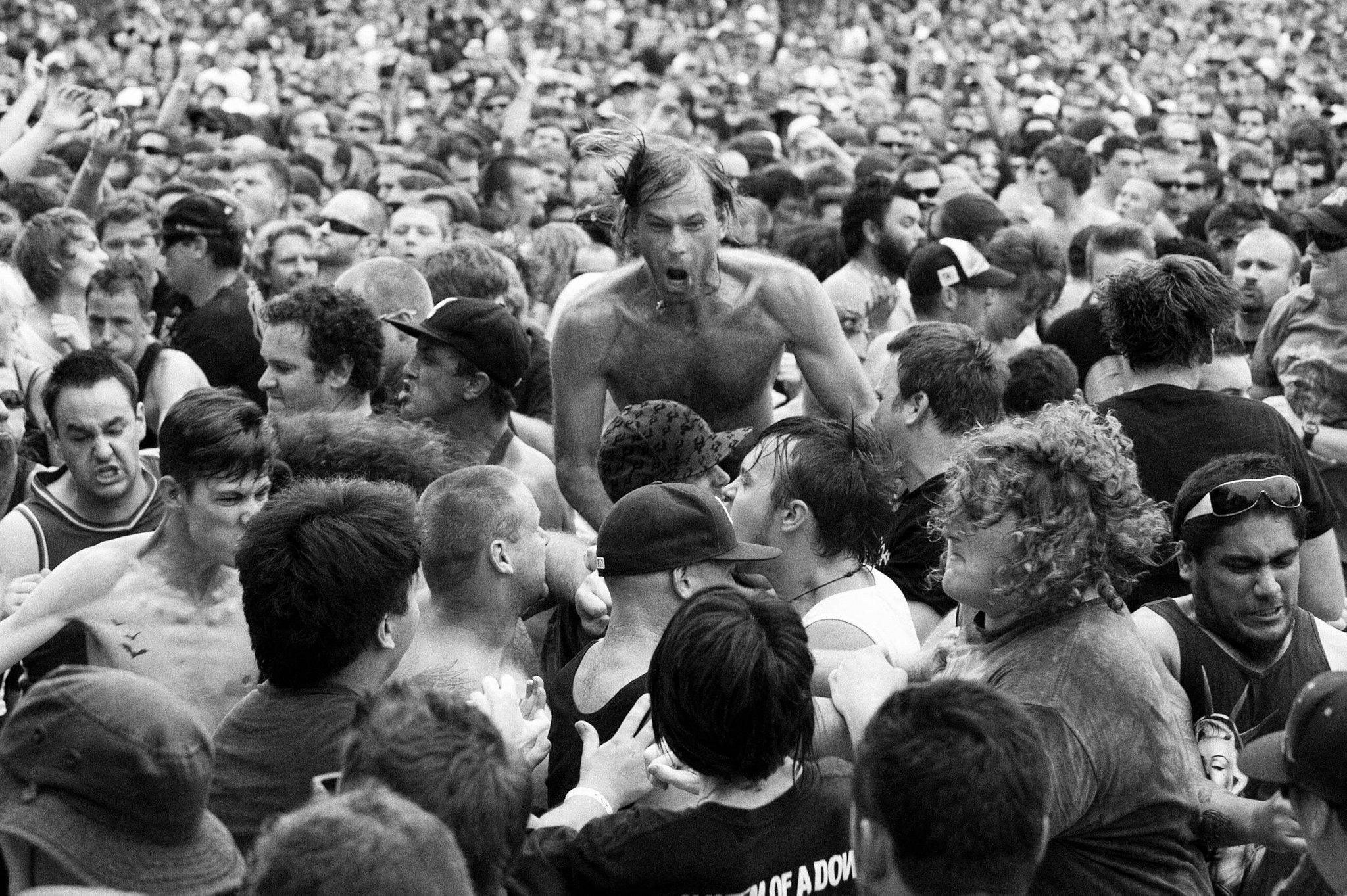
R&K: Do you have a preference for what festivals and what crowds you photograph?
Bezzina: Definitely the heavier music festivals. I guess because that’s the kind of music I like listening to. I feel more connected to these people. There is a kinship and an utmost respect that I have for them, and I think it shows in a lot of those images. Also, heavy music allows people to be a bit crazier. It’s more active than others. You don’t really find some punk guy in a wheelchair crowd-surfing at any other show.
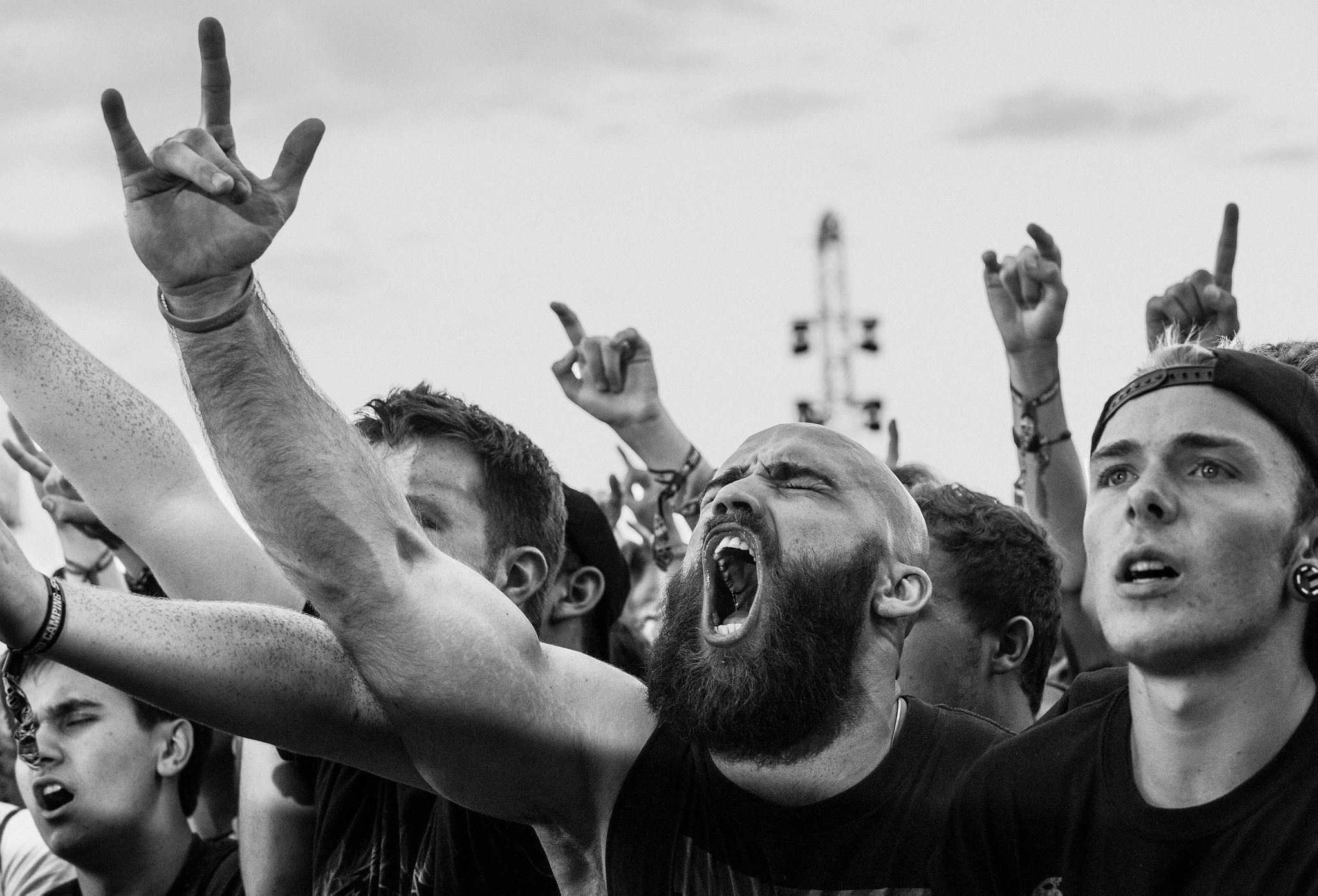
R&K: Do you think this kind of music and its fans are misunderstood by the mainstream media?
Bezzina: It’s possible. But there are also a lot of articles popping up now that say that people who listen to heavy music are actually a lot calmer. Or there was one today that’s about all the kids that used to listen to heavy metal back in the day, what they’ve actually grown up to be, like doctors and lawyers, etc. So there is a misconception that heavy metal means bikers and rough people but maybe that’s changing.
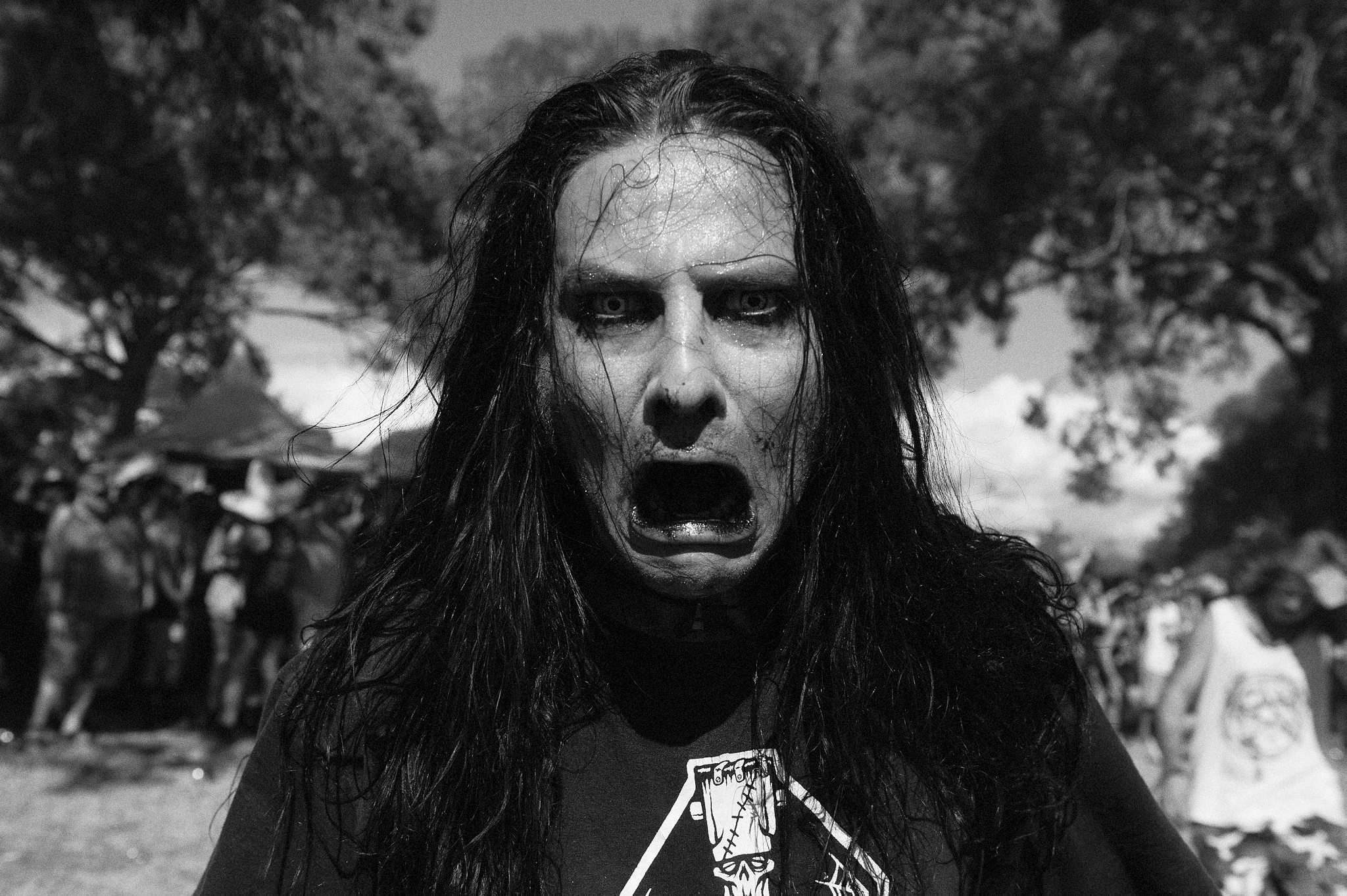
R&K: Your project is also about much more than just music.
Bezzina: With all of my projects, I like to consider them from the future. How will people respond to them 30 years from now? Or even longer? They become kind of an anthropological study on a scene, on a culture, on humanity in a way. It’s only been 40 years or so that music festivals have been really big in our culture. Now, you’re looking at hundreds of them all over the world. And these three-day music festivals were new to me, because in Australia we don’t have them. I mean, we have one, but it’s mostly all one-day festivals that travel. Probably because Australia is so big and people are so far spread apart. But in doing that, it’s really prohibitive with cost and a lot of these festivals are failing because they can’t keep their profits.

R&K: You shot festivals in a lot of different countries, how else did they differ from each other?
Bezzina: There is a festival called Wacken in Germany that’s very unique. It does feel like a very close-knit community. That one sells out before the bands are even announced. It will actually sell out for the following year before the festival is even over. And it’s because people go there for the community aspect. The whole year they look forward to coming to these grounds. In a way, it is like a sacred, religious experience for them. To be part of something bigger than their lives are. I think that says a lot about these big European festivals.
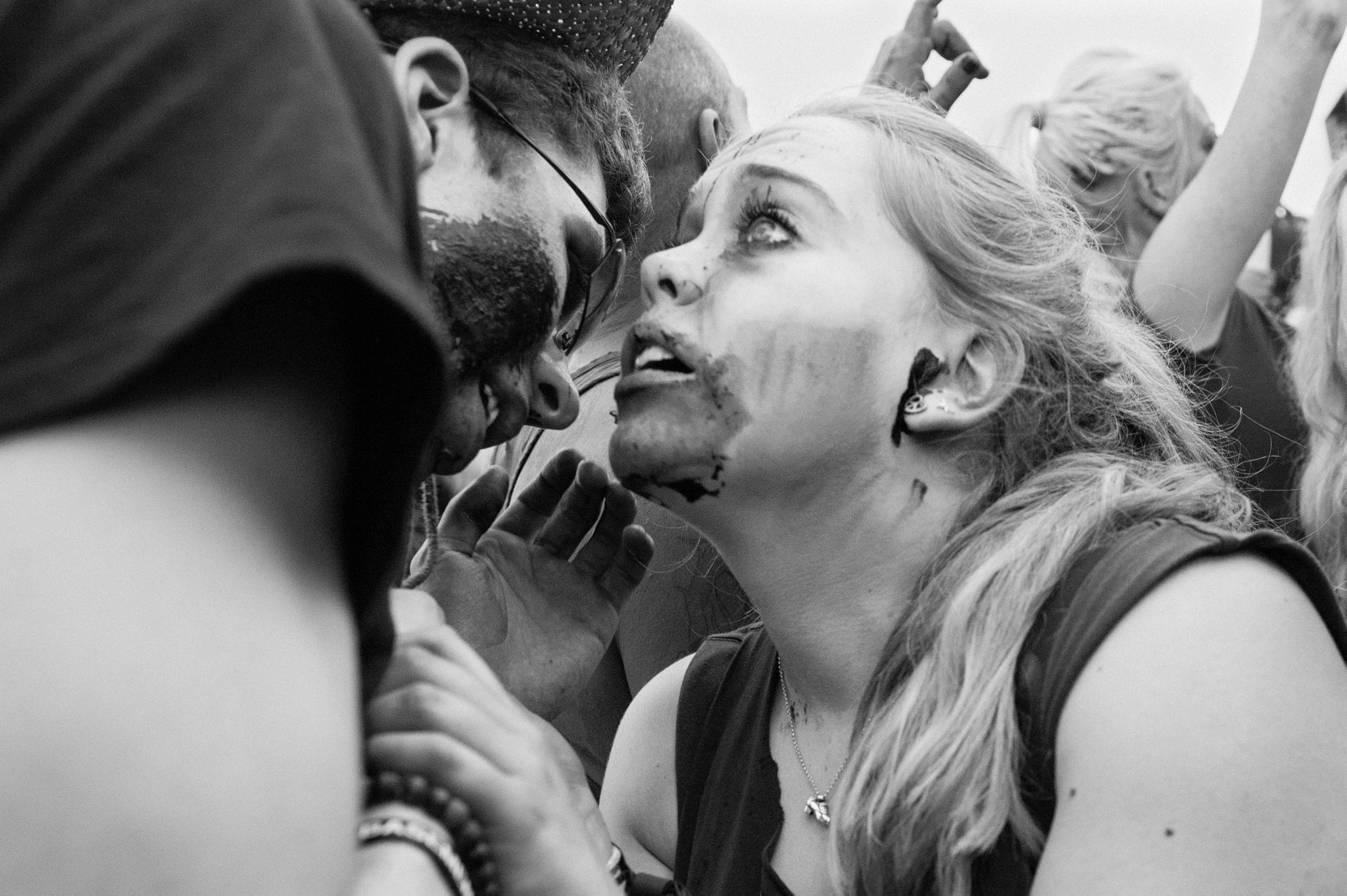
R&K: You didn’t find the same atmosphere in Australia.
Bezzina: No, not at all, because in Australia you rock up at 11 in the morning and you go home at midnight and that’s it, it’s over. Being so small as well, they don’t have the grounds to art direct the space, to really transform it. You just have the usual food stands that you would find at any kind of event, the infrastructure is very similar to any festival, whereas something like Hellfest in France, they really transform the space for those three days. And in doing so, it takes on a transformative vision of that music. It takes you to another place. That’s what I love about Hellfest. You come out of a tent and it’s dark and there’s all these projections of crosses on the grounds, you’re in another world.
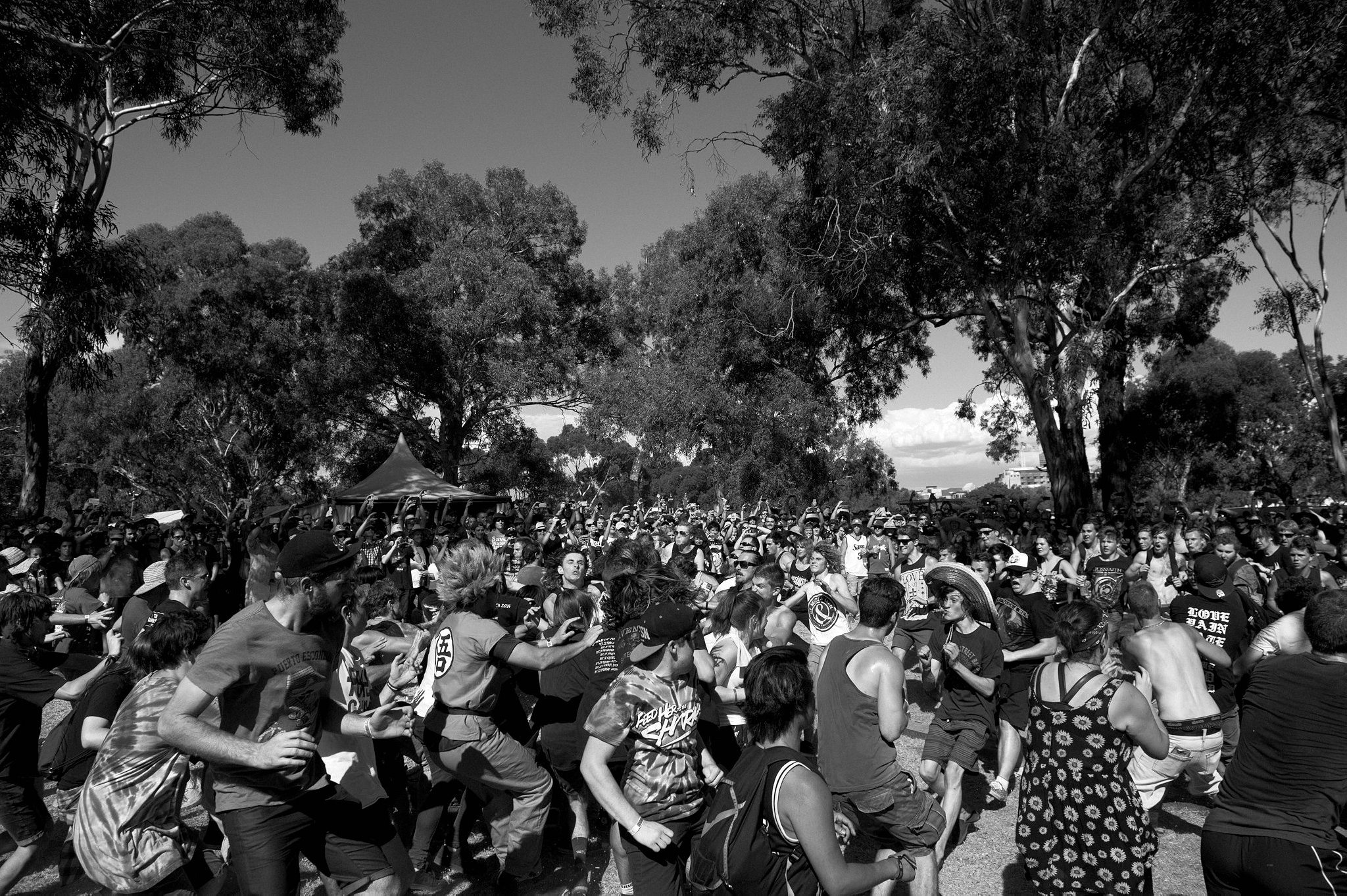
R&K: Where else did you go?
Bezzina: I did Spain, quite a few in the UK. And to be honest for a lot of days, in certain situations, I might not talk to anyone. I might be so entrenched in shooting the crowd, then shooting a band, and going back to the crowd, that I would never party or drink. At the end of the night, I would just go back to my tent and go to sleep, get back up and start it all over again. They’re usually long, hot and exhausting days, so I would be a bit of a recluse. I might stand in the same spot for 20 minutes, just watching people go past me until I find someone interesting enough to follow. Or I would wait for something to happen in front of me.
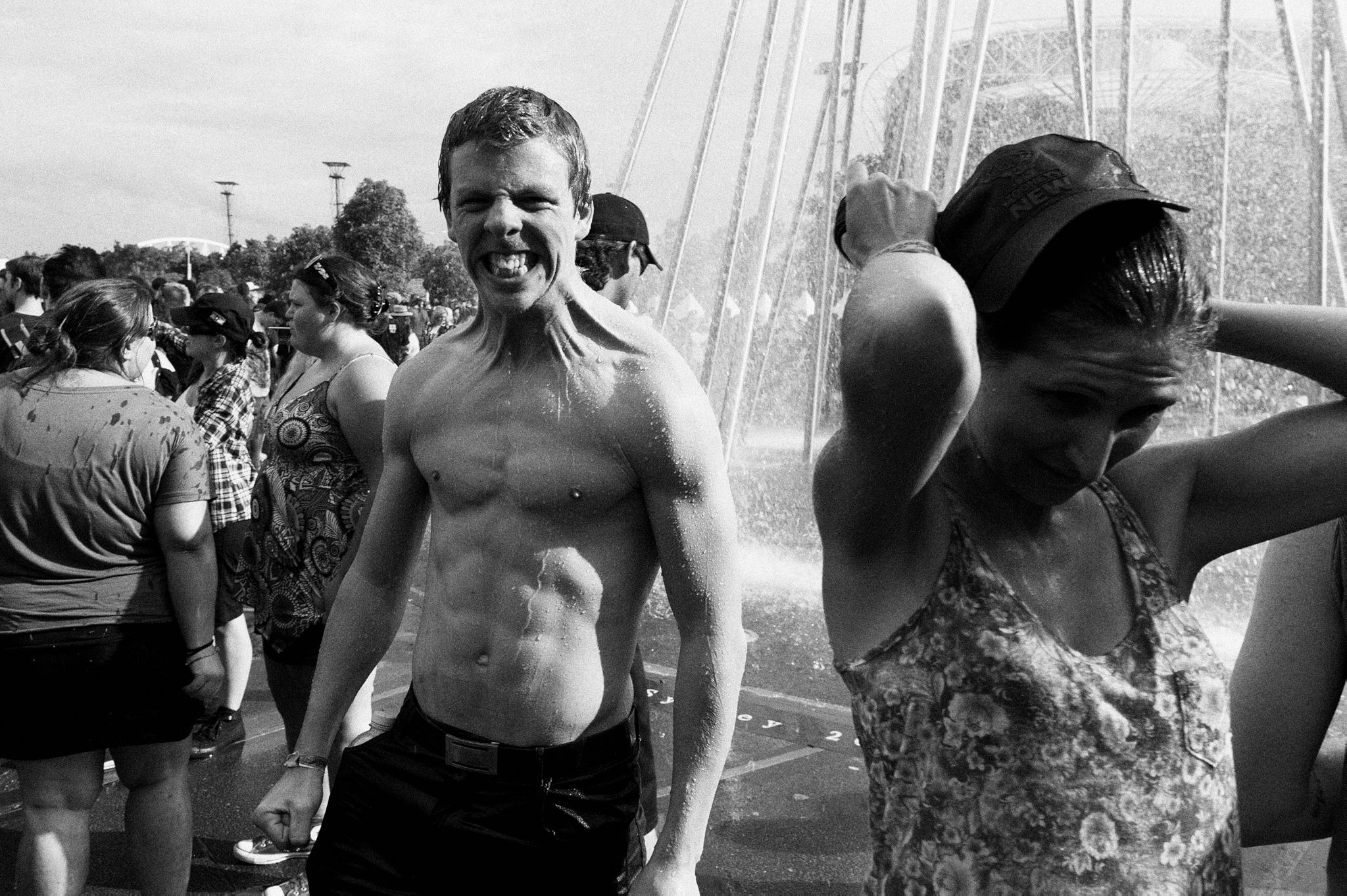
R&K: I assume people didn’t take too much notice.
Bezzina: Exactly. The environment really lends itself to observational photography. I feel much more comfortable photographing people in that situation than on the street, where they might be more on guard.
R&K: One thing I was really drawn to in this project is the concept of the crowd and how it can take on a personality of its own.
Bezzina: Sometimes when I look at it, I can imagine taking the music element away from what we’re seeing. What you have is thousands of people getting together and basically vibrating, making energy. I think that feeling is quite powerful, like a religious experience where you’re carried away. It goes beyond words. You look at how it’s powerful in a social setting, it almost develops a social understanding. It promotes a group development of cultural identity. I would love to expand this in other parts of the world and do an edition in Asia and an edition in the Americas.
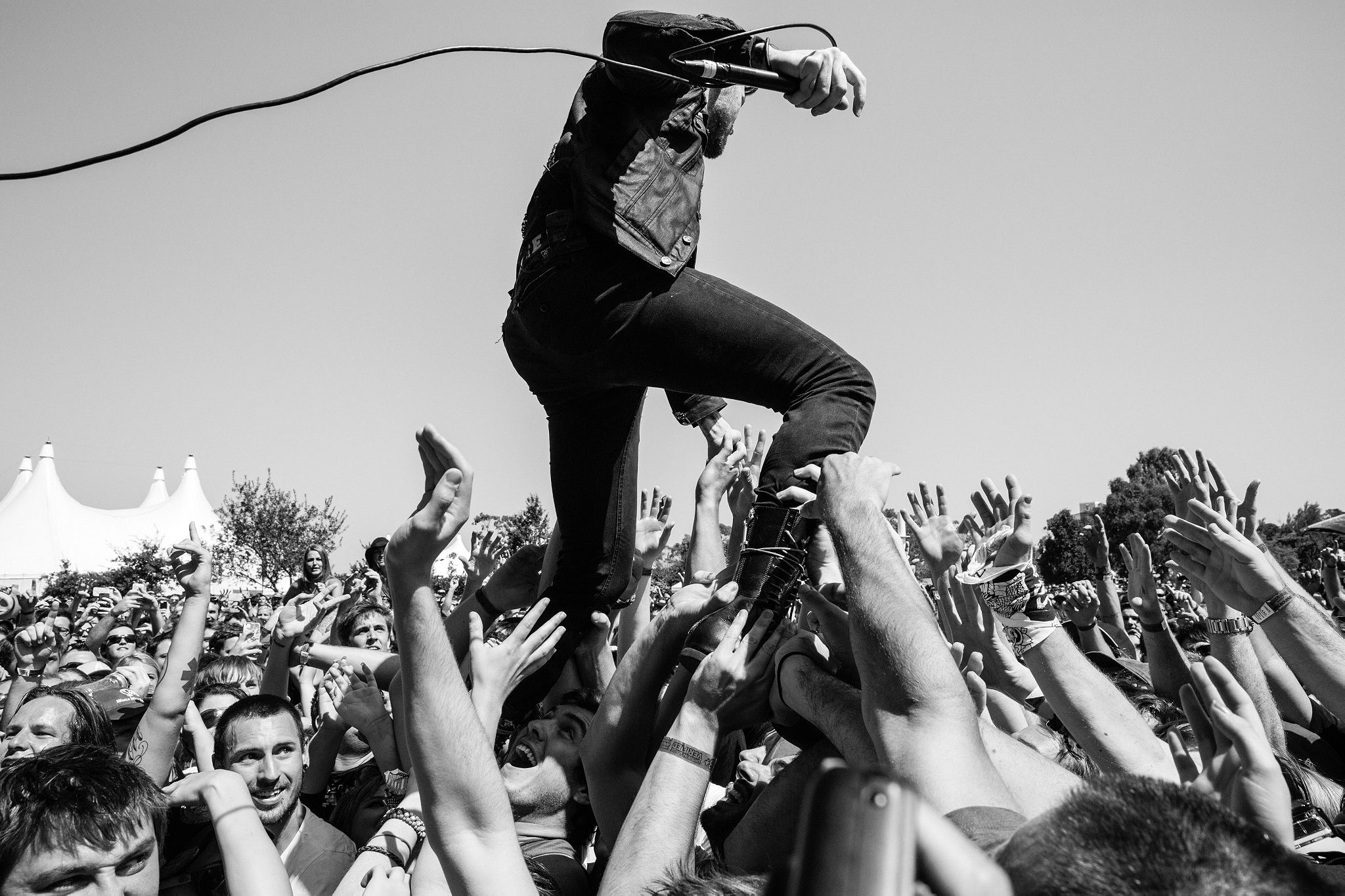
R&K: Tell us about the book you are working on.
Bezzina: I’m hoping to get it printed and released by the end of November. It’s going to be dual tone offset printed, which is a little bit pricier but gives you a much richer image than digital printing. It will have over 100 images, and I’m releasing it in three different editions. The general trade edition will have a printed cover, the limited edition will have a cloth cover and a really nice inlay image, and there will be an artist edition. For that, I’ve been playing around with the idea of reprinting the first few pages by hand, so using old printing techniques and doing all the text as letterpress. I will also hand-make covers, which may have my original photo passes bound into them. There will be 25 of those and they’ll all be unique.
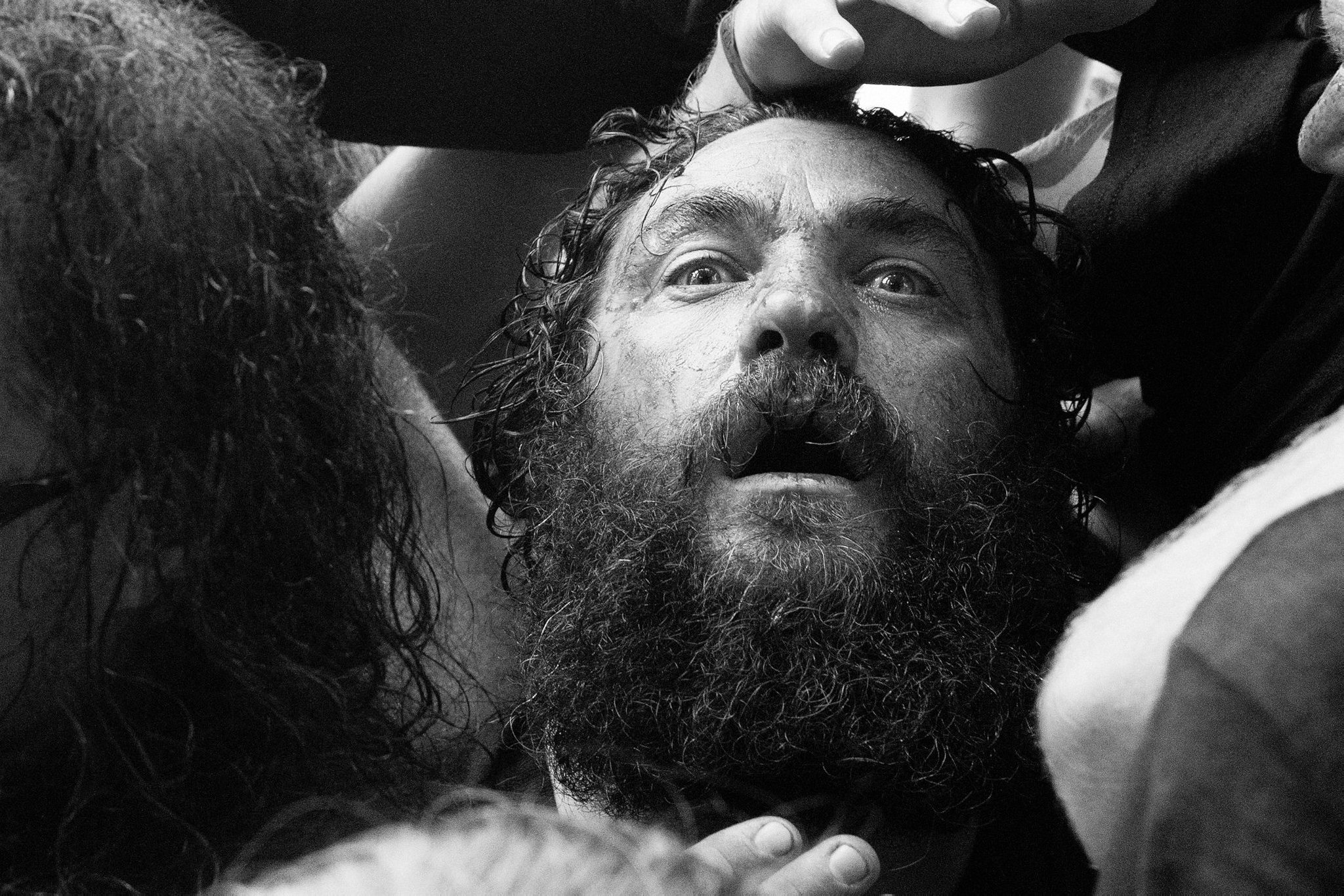
R&K: You’re in the middle of a crowd-funding campaign to make all of this possible. How have people reacted to the project so far?
Bezzina: A few musicians really connected with it. They told me that they love the images because they’re real and they’re gritty and there’s really nothing fake about it. There’s no real eye contact and if there is, it’s secretly captured. You know the saying: the very act of observation changes that of which is being observed. Once people know they’re being photographed, their whole body language changes. And I wanted to keep an honesty in these shots. So I’ve had that reaction and I’ve also had people who have found themselves in the shots and love that they’re in this book and that they’re going to be part of this history. Next year, I plan to travel to all the European festivals and set up a stall there to support this book. It’ll be an opportunity to talk to the fans and show them the work and have discussions about it. Music photography has always been my passion, so we’ll see how this book goes and hopefully I can organize access to North American festivals next.
You can help Nic Bezzina turn “Release The Crowd” into a book by donating to his Kickstarter campaign.
